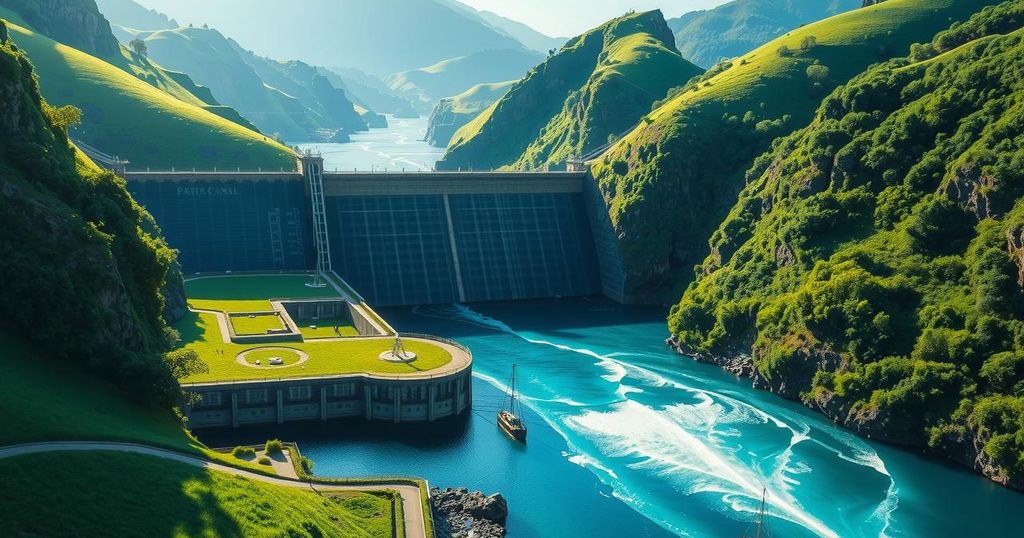Panama Canal Plans New Dam to Combat Climate Change and Ensure Water Security

The Panama Canal Authority is considering a new dam project to mitigate drought impacts and secure water supplies as climate change poses severe threats. With a proposal first introduced two decades ago, the dam aims to bolster drinking water access and enhance canal operations. The project, estimated at $1.6 billion, would include a new reservoir and infrastructure to support the growing population and maritime needs.
The Panama Canal Authority is contemplating the construction of a new dam to safeguard the canal against the adverse effects of climate change. First proposed twenty years ago, this dam is deemed crucial for ensuring the canal can thrive amid changing environmental conditions. The Panama Canal serves as a significant thoroughfare for global maritime trade, linking the Atlantic and Pacific Oceans and facilitating the transit of approximately 3% of international shipping.
As the canal prepares to celebrate its 110th anniversary in 2024, it faces unprecedented challenges, particularly a severe drought that has depleted the Gatun and Alhajeula reservoirs to historically low levels. In response, the Canal Authority has adopted a water resource management strategy designed to not only support the growing population of over four million residents in Panama but also to enhance the reliability and efficiency of canal operations.
The Panama Canal’s Administrator, Ricaurte Vásquez Morales, emphasized the necessity of increasing water storage capacity, stating, “In Panama, we have a high dependence on rainfall, and it is necessary to increase storage capacity to ensure drinking water and transit water.” The proposed multipurpose reservoir in the Indio River basin aims to meet impending water demands, ensuring both human consumption and canal operations are sustained.
Plans include the construction of a dam 90.5 meters high and 840 meters long on the Rio Indio, complemented by an 8-kilometer tunnel that would link the dam to Gatun Lake. This development would enable an additional 15 vessels to navigate the canal during dry seasons, while also guaranteeing a consistent supply of drinking water for local inhabitants. If the project, estimated at $1.6 billion, gains approval, completion could occur by 2030, marking a significant step in addressing climate-related challenges.
The persistent impacts of drought have severely restricted canal operations, leading to a notable decrease in ship passage. This situation has resulted in long waits for vessels, with some paying as much as $4 million for expedited passage due to increased fees stemming from reduced capacity. The primary user, the United States, has raised concerns regarding these heightened costs.
Local concerns regarding the potential displacement of communities are also prevalent, with initial assessments indicating that approximately 2,200 individuals may need to relocate due to the new reservoir’s construction, and an additional 2,000 could be affected. The Panama Canal Authority has committed to prioritizing the needs and concerns of these residents before moving forward with the project.
The proposed new dam represents a strategic response to ongoing drought challenges faced by the Panama Canal. This initiative aims to enhance water supply for both canal operations and the local population amidst the threats posed by climate change. By addressing the concerns of affected communities and securing additional water resources, the Panama Canal Authority demonstrates its commitment to maintaining the canal’s viability as a critical global shipping artery.
Original Source: www.waterpowermagazine.com






